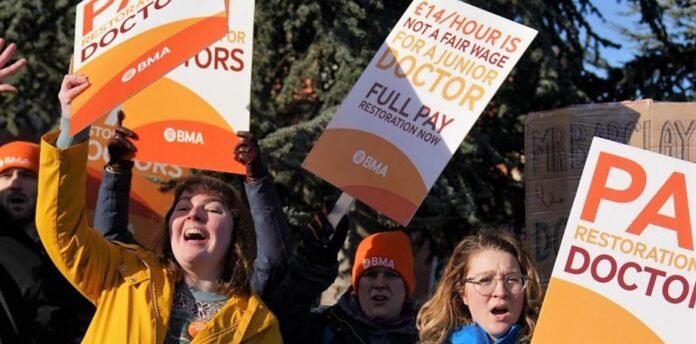The Strike’s Disruptive Nature

The National Health Service (NHS) is currently facing an unprecedented disruption as junior doctors go on strike, which could last for several weeks. The walkouts could cause upheaval, making it one of the most disruptive incidents in the NHS’s history. As medics threaten more walkouts, NHS bosses have urged the Government and the unions to start negotiations immediately, given that patient safety is at a heightened risk during the walkouts.
The Heightened Risk to Patient Safety
The strikes have caused incredibly serious problems, which are jeopardizing the safety and dignity of patients. According to the NHS Confederation, which represents NHS trusts, it is impossible to take out half the medical workforce without having a significant impact on patient safety. In emergency care, there is an increased risk to patient safety, as warned by NHS Providers. The British Medical Association (BMA) also warns that more strikes are likely unless the Government enters talks.
The Root Cause of the Strike

The strikes are centered around a pay row between the BMA and the Government, with the union claiming that junior doctors in England have experienced a 26% real-terms pay cut since 2008/09 because pay rises have been below inflation. The union has requested a full pay restoration, which the Government has labeled as unaffordable, and therefore, the Government has not fulfilled their demand.
The Junior Doctors’ Demands
Junior doctors’ basic pay packets may be as little as £14.09 per hour, according to the BMA. An estimated 50,000 junior doctors are on strike, and the union warns that more strikes will occur unless the Government enters talks. The BMA’s junior doctors’ committee co-chairman, Dr. Vivek Trivedi, mentioned that a “credible” offer from the Government would lead to the doctors calling off the strike action for the rest of the week.
The Government’s Response
According to Health Secretary Steve Barclay, a 35% pay rise demand is not reasonable or fair, as it would involve some junior doctors receiving over £20,000 more in terms of their basic pay, which is unaffordable. The Government recognizes the vital role that junior doctors play in the NHS, and they aim to reach a fair and reasonable settlement with them. The Government is ready to engage in meaningful and constructive talks with them.
The Strike’s Impact
The BMA’s junior doctors’ strike has caused significant disruption in the NHS, with 350,000 appointments and operations rescheduled, and patient safety put at risk. Emergency services have been affected, with stretched resources causing concerns among NHS trust leaders. The BMA has warned that the strikes could last for weeks, and further action could follow if the Government does not enter into negotiations. The NHS Confederation has urged both parties to find a way to start talking, with the positions of both sides currently entrenched.
The Possible Path Forward
NHS Providers have suggested bringing in the Advisory, Conciliation and Arbitration Service (ACAS) to help facilitate a conversation and reach a resolution between the parties. Both parties need to be open to negotiation and compromise to put strikes on pause, and the BMA is asking the Government to negotiate with them in an honest and meaningful way. The strike action is expected to continue for the next few days, and the impact on the NHS is likely to be significant.
Looking Ahead
It is clear that the junior doctors’ strike is causing significant disruption to the NHS, which is already under considerable pressure due to the ongoing COVID-19 pandemic. The strike is resulting in a backlog of appointments and operations, leading to further delays and difficulties for patients. It is essential for both the Government and the BMA to come to an agreement that is fair to both parties, but that also ensures the safety of patients.
The Importance of Burstiness and Perplexity in Writing
In discussing the junior doctors’ strike, it is critical to note the importance of burstiness and perplexity in writing. Burstiness refers to the variation of sentence lengths in writing. It is essential to have a mix of long, complex sentences, as well as shorter, simpler ones, as this creates a more interesting and engaging read.
Perplexity, on the other hand, measures the complexity of text. In writing about complex issues, such as the junior doctors’ strike, it is vital to use language that is appropriate to the subject matter. Using overly simplified language can lead to misunderstandings and misinterpretations of the situation.
In conclusion, the junior doctors’ strike is causing significant disruption to the NHS, and it is essential for both parties to come to a fair and reasonable agreement that ensures patient safety. When discussing complex issues such as this, it is crucial to use language that is appropriate to the subject matter and to include a mix of long and short sentences to create an engaging read.











